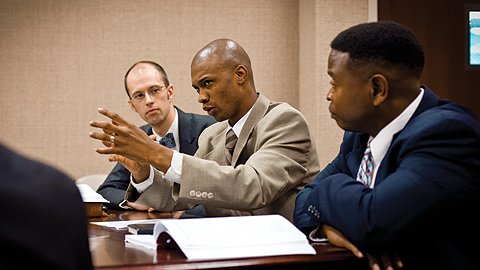
Plan how the ward or stake council will organize and carry out each of the tasks listed below, identifying who will be responsible for each task and how the tasks will be accomplished. Designate a primary location and an alternate location where council members will gather after an emergency to direct relief efforts.
Disaster Response
Immediately following the disaster, the plan will help wards and stakes:
- Account
- Assess
- Respond
- Report
Account. The Church respects and may defer to civil authorities and their response efforts in an emergency, but Church leaders may also take independent action in behalf of Church members. Ward and stake councils have responsibility to account for all missionaries and members and to help with life-threatening circumstances. First, account for every missionary and member, particularly those identified in the Critical Information—Members with Special Needs worksheet. Consider accounting for members through home and visiting teachers. Plan how to account for missionaries and members if communication methods are disrupted (see Step 4: Identify Emergency Communication Methods).
Assess. Refer to the Planning for Disruptions worksheet to help you plan how to assess member needs. For example, assess the members' ability to access additional power sources if a main power supply is disrupted. Determine how to assess missionary and member needs, member and Church property, and general conditions in the community in the event of an emergency.
Respond. Plan how to supply basic provisions and services—such as food, medical aid, temporary shelter, sanitation, and clothing—for members and others. Provide assistance to members who have suffered damage to homes or belongings, emotional trauma, injury, or loss of livelihood.
- Seek medical assistance for those who have been injured or who have other health challenges.
- Coordinate response efforts (such as helping to locate or reunite separated family members) with civil authorities and community relief organizations.
- Request assistance, if needed, from area leaders or Church personnel.
Report. Plan how to report the condition of:
- Missionaries and members, as well as their locations.
- Member housing
- Church properties
- The community (including roads, public utilities, commerce, facilities, and other infrastructure).
Report this information through priesthood lines up to the Area Presidency.
Take Action:
- Outline a procedure to account for every missionary and member, especially those identified in the Critical Information—Members with Special Needs worksheet.
- Outline a procedure to locate and reunite separated family members.
- Determine a procedure for assessing and reporting member needs in an emergency situation.
- Plan how to supply basic provisions and services—such as food, medical aid, temporary shelter, sanitation, and clothing—for members and others.
- Plan how to provide assistance to members who have suffered damage to homes or belongings, emotional trauma, injury, or loss of livelihood.
- Outline how to work with civil authorities and relief organizations to meet community needs.
- Plan how to assess and report the condition of Church buildings and property.
- Establish a procedure for contacting members and reporting information during a disaster.